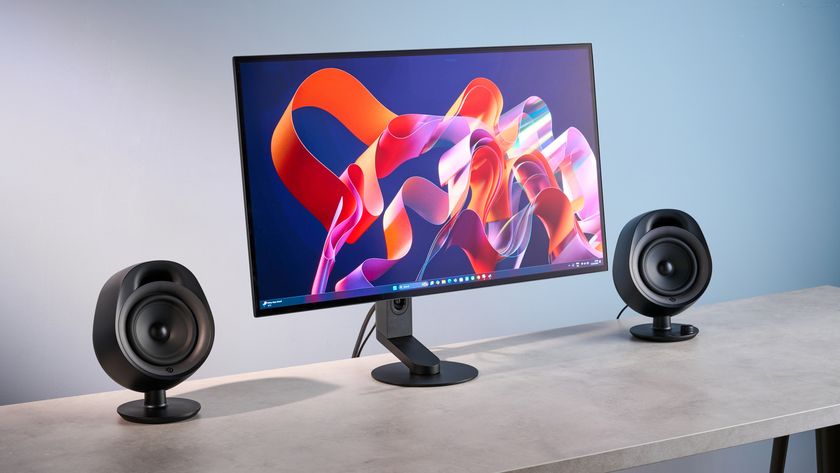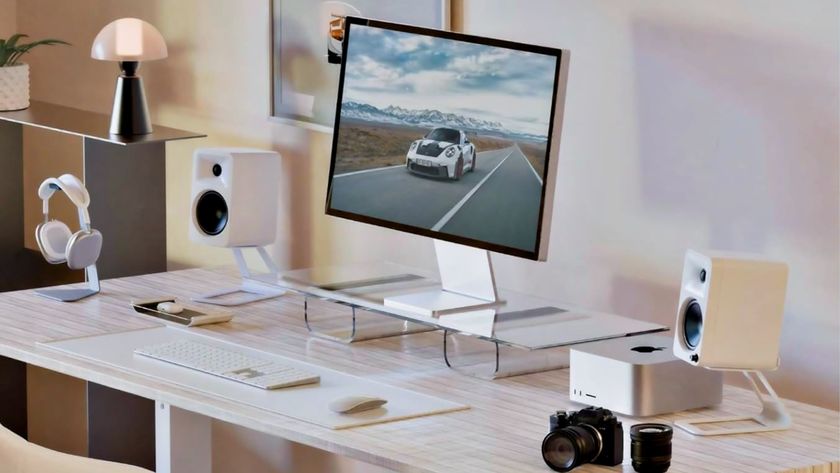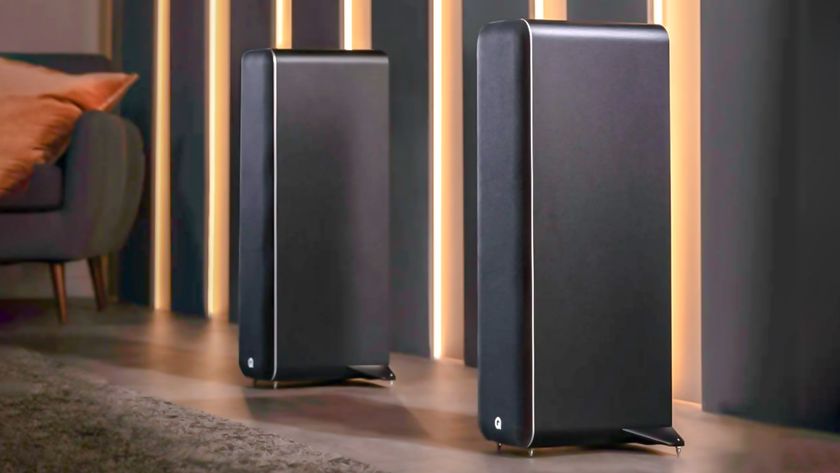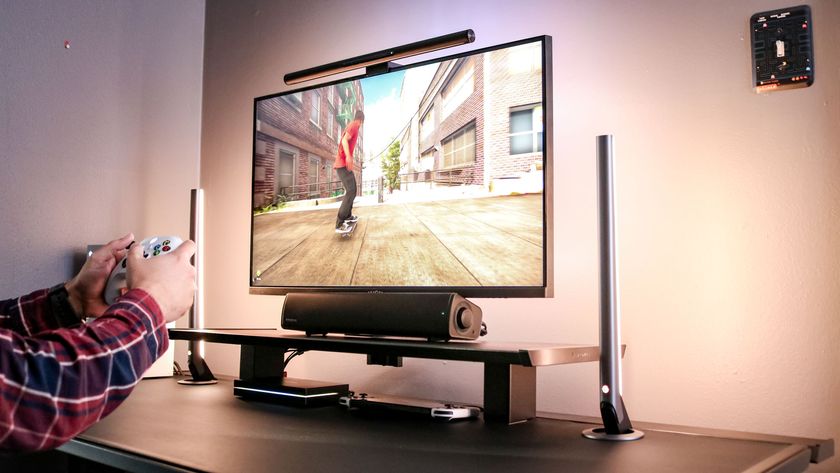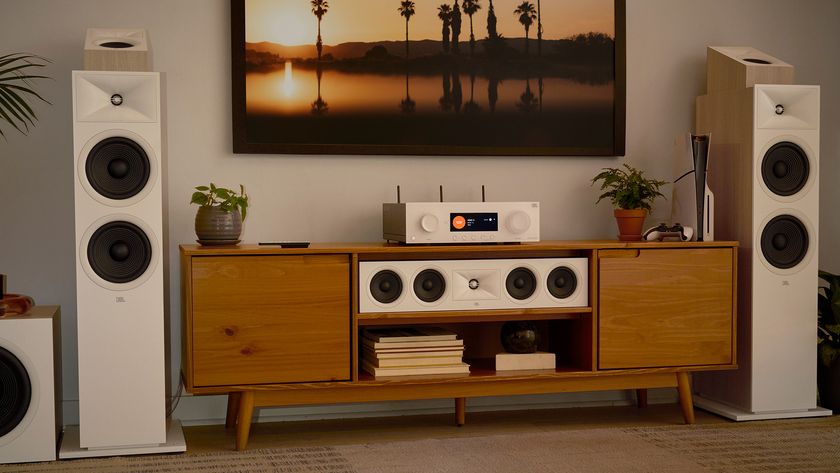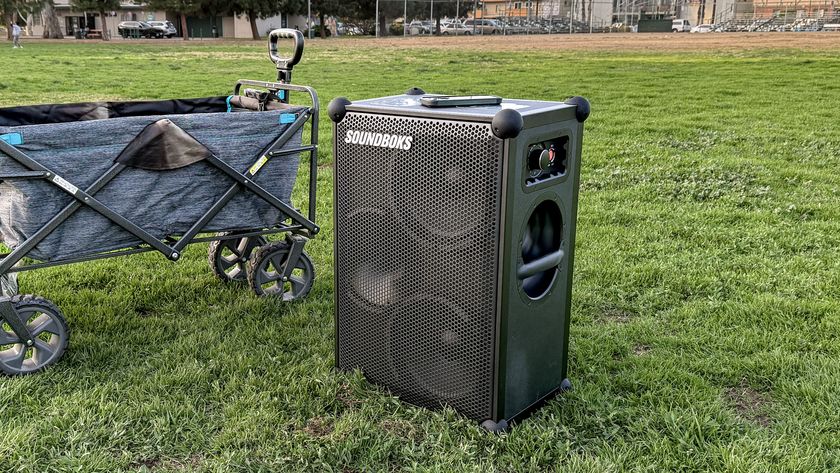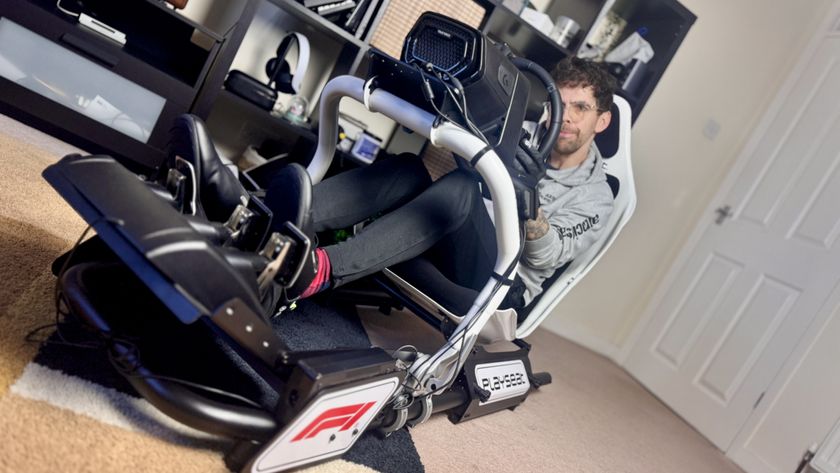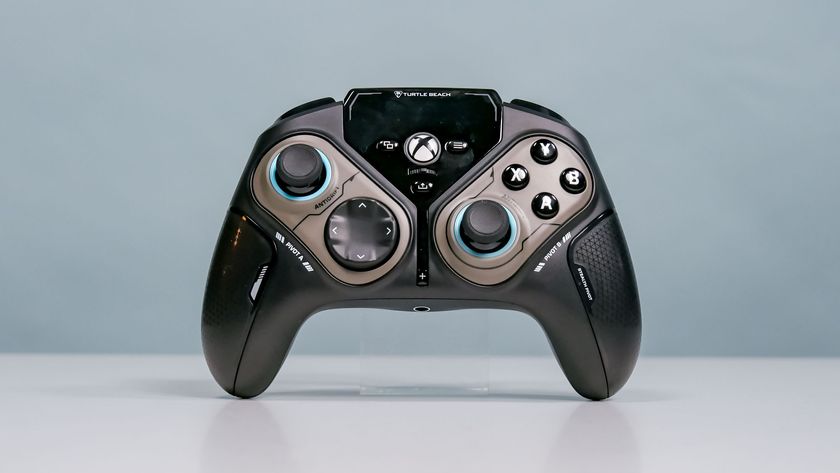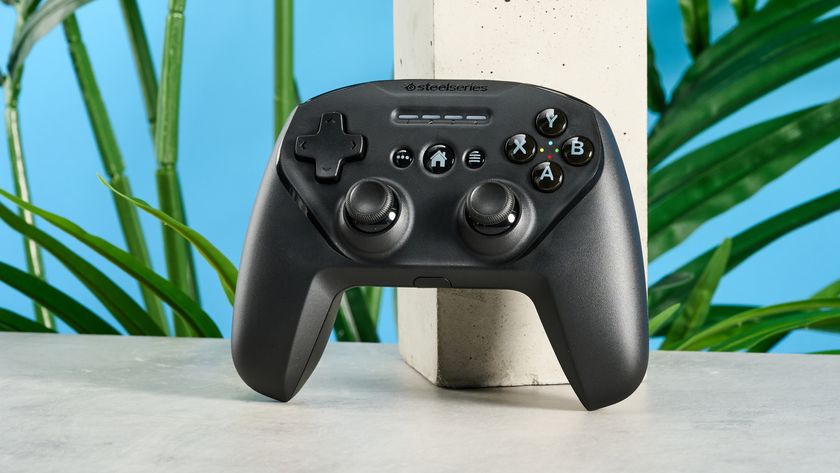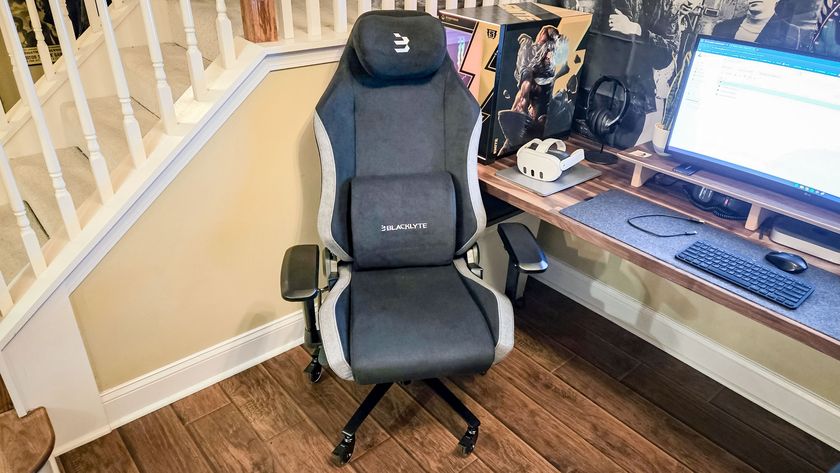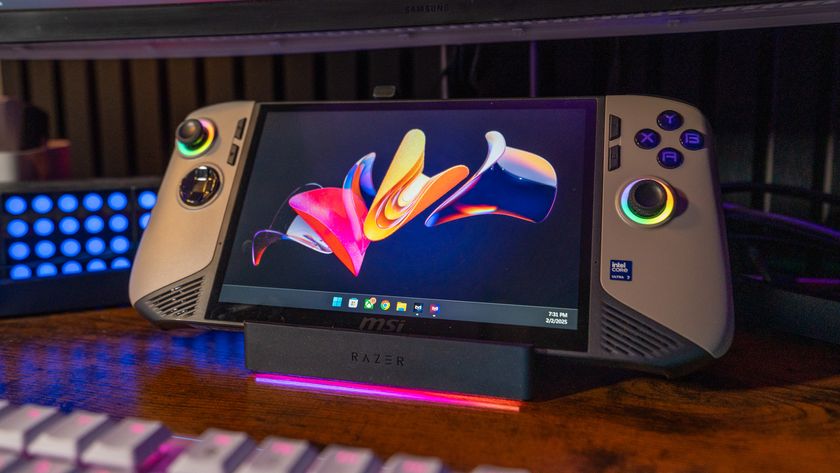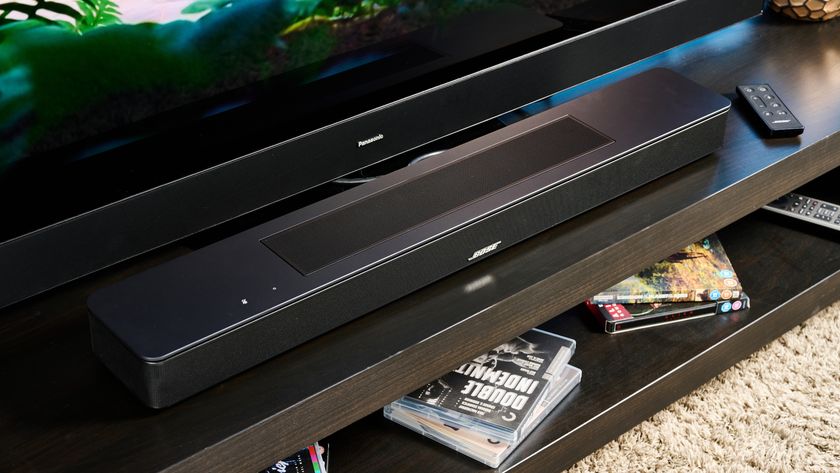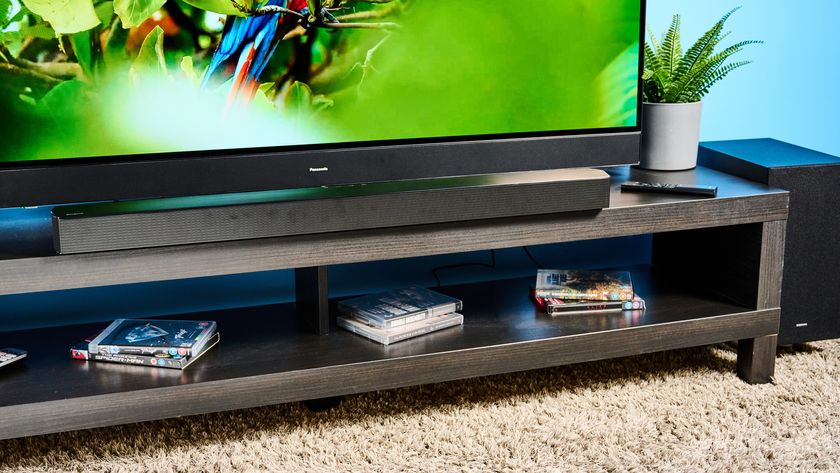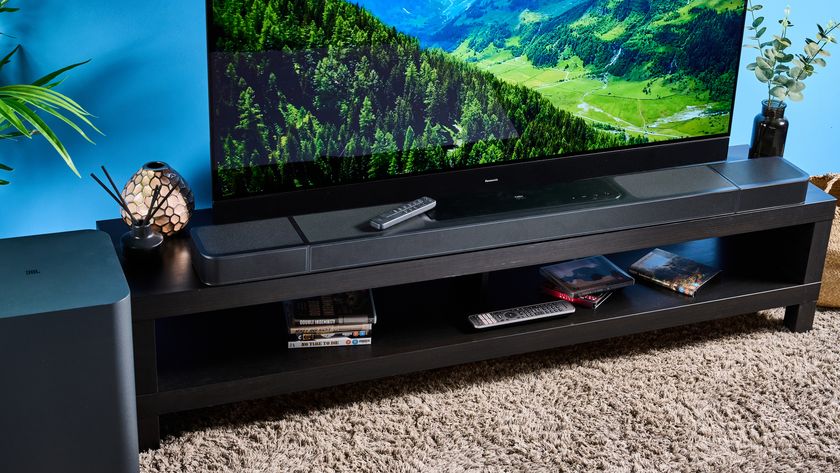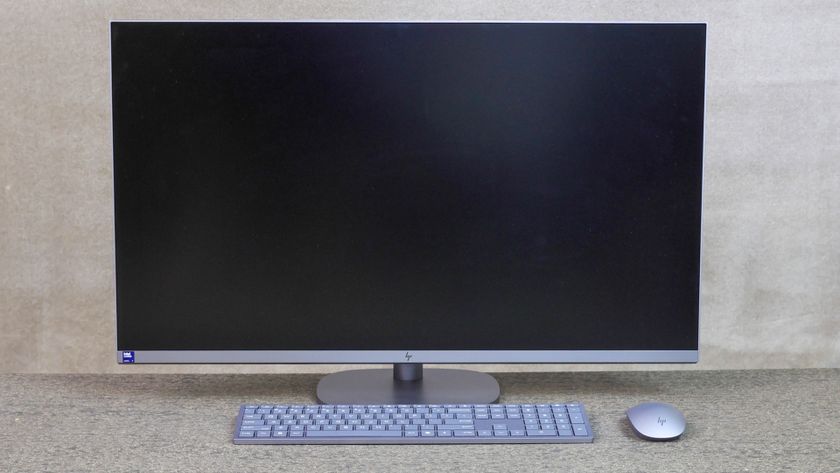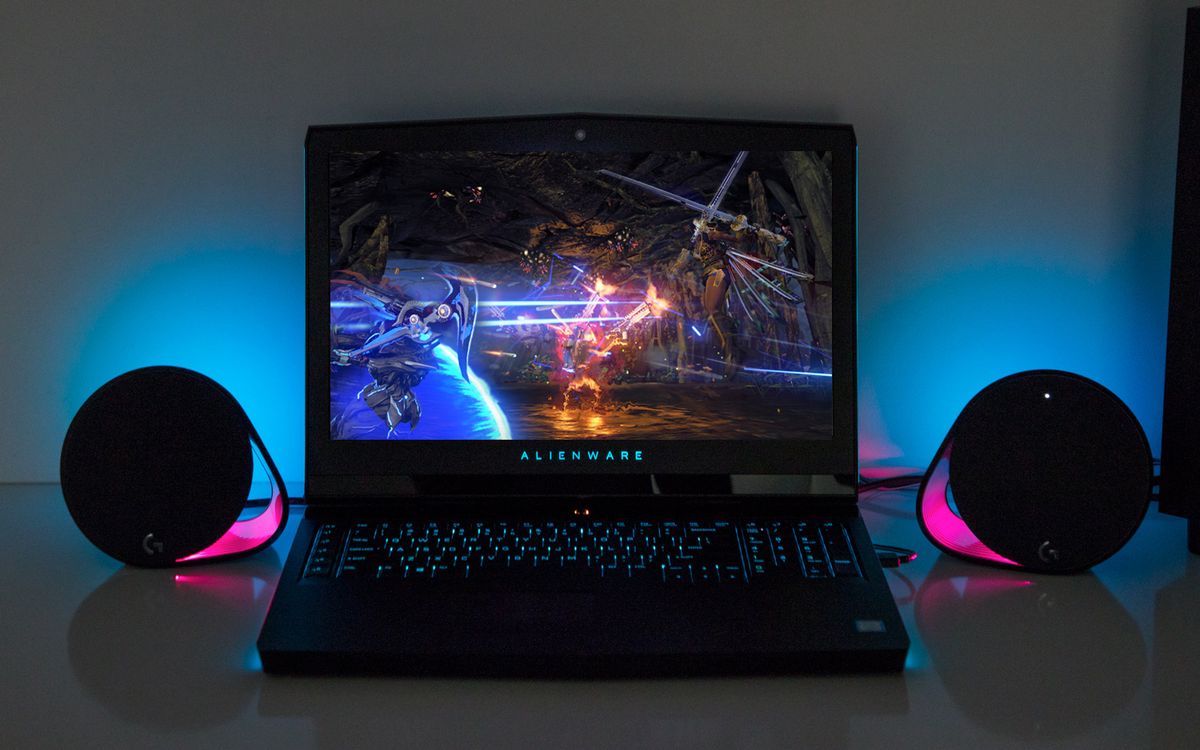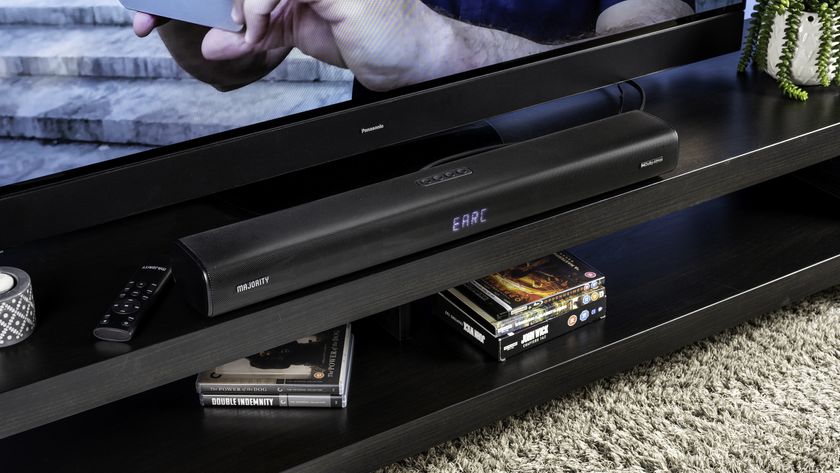Tom's Guide Verdict
If you want some serious sound that puts PC gaming front and center, the Logitech G560 is a worthwhile choice.
Pros
- +
Excellent sound
- +
Ambitious lighting options
- +
Robust software
- +
Bluetooth connectivity
Cons
- -
No way to disable subwoofer
- -
Screen sampling can be overly aggressive
Why you can trust Tom's Guide
Gaming headsets have their place, particularly if you're into the competitive scene and need a microphone by your lips at all times. Otherwise, a good set of speakers is often the way to go. These let you experience deep, rich sound without the need for restrictive headgear — and you can share your gaming glories with friends and loved ones. Enter the Logitech G560 Gaming Speakers: a full-featured, three-part set of peripherals that also provides one heck of a light show.
The promise of the G560 is twofold: First, it wants to be an excellent speaker, for both music and games. Here, it succeeds without qualification, which won't surprise anyone who's familiar with existing Logitech speakers.
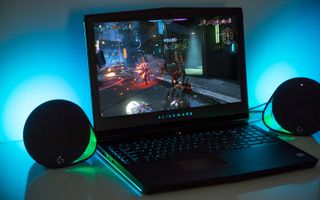
Second, Logitech has also imbued the G560 with a sophisticated lighting system comprising four distinct zones with bright, colorful LEDs. The lights are pretty and innocuous, but they can also be distracting, due to some issues with the software and some aggressive lighting defaults.
Still, if you want some of the best computer speakers that put PC gaming front and center, this Logitech G560 review will show why it's a worthwhile choice at a reasonable price.
- The best PC games you can buy right now
- Upgrade your TV speakers with the best soundbars
Logitech G560 Gaming Speakers review: Design
The G560 comes with a lot of pieces and wires, but it's not nearly as complex as it looks. (The setup instructions are printed right on the box, and there are no words involved, which is reassuring.) A rectangular subwoofer, which will probably live somewhere on your floor, acts as the focal point for the whole setup. From there, you connect two circular speakers (with monitor cables, in order to facilitate the lights), which you place on your desk. There's also a USB cable that runs from the subwoofer directly to your computer, and a power cable.
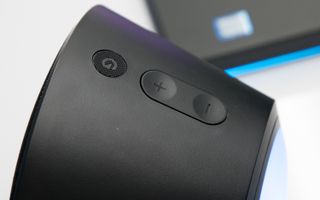
While the speakers require a little cable management, once they're hooked up, there's not much else you have to know. The left speaker is just a speaker; the right speaker has a volume control on top, as well as a button to change the RGB lighting brightness. Around the back, there are buttons to shut off the speakers or pair a Bluetooth device.
Those who take pride in their game center's appearance will find a lot to like in the G560. The subwoofer is plain and black, blending with whatever setting it's in. The speakers themselves are streamlined and attractive, with a distinctive shape that nevertheless doesn't draw attention away from their overall surroundings. (The lighting can be distracting, but of course, you have control over how intense that gets.)

The speakers are quite large: about 7.5 x 6.0 inches (compare that to the Razer Nommo speakers, which are 8 inches across by about a foot tall) at their widest point. If desk space is at a premium, you might consider more vertically inclined speakers.
The G560 has one significant drawback, though, tied directly into its physical design: Because the speakers route directly through the subwoofer, it's not possible to turn the subwoofer off completely. As anyone who's ever owned a subwoofer can attest, bass vibrations can be more noticeable and distracting than even moderately loud music, particularly late at night.
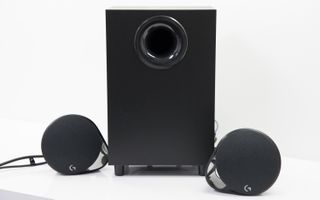
If you share a wall with your parents, your children, your roommate or even just your neighbors, operating your speakers late at night or early in the morning could quickly turn into a fraught situation. There are a few ways to mitigate this drawback — there's a headphone jack in the right speaker, and you can decrease the bass volume in the Logitech Gaming Software — but neither solution is perfect.
The headphone jack sounds treble-forward, and its position in the back of the speaker makes it perilous for short cables. Decreasing the bass will silence the woofer, but you'll also stop hearing bass sounds through the regular speakers. If late-night gaming is your thing but you need to keep things relatively quiet, the G560 may be a tough sell.
Logitech G560 Gaming Speakers review: Gaming performance
While the G560 can handle any sound you throw at it, from any source, its primary purpose is as a PC gaming accessory. (Indeed, you can get similar non-gaming setups from Logitech for about $100.) As such, I ran it through a rigorous round of testing with games ranging from competitive first-person shooters to story-driven single-player RPGs.
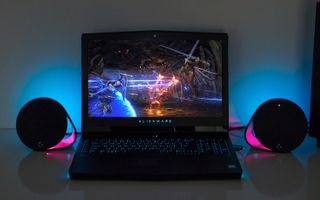
The G560 provided rich, immersive sound, regardless of the genre. Whether I used DTS 7.1 surround sound (with a preset gaming EQ profile) or standard stereo, the audio broadcast the full range of everything I needed to hear: voice work, sound effects and music. Sweeping orchestral tunes dominated Pillars of Eternity, while the roar of gunfire was front and center in Overwatch. Because the G560 supports surround sound, you can even position your speakers a little creatively and feel like a whole game is taking place right around your ears.
The sound from the two circular speakers is comparable to what you'd hear on a high-end headset. However, if you've never gamed with a subwoofer before, it's difficult to explain just how much of a difference it makes. You don't simply hear bass music and explosions; you feel them in your gut and, depending on where the woofer is located, maybe even in your feet and legs. Even on lower volumes, the woofer makes a tremendous difference. I can't say whether it will give you a competitive edge, but it will definitely make your gameplay feel that much more immediate and realistic.
The punk rockers in the crowd need not worry — the G560 gets plenty loud. I have been hesitant to crank the volume past about 20 on Windows 10 for fear of blowing out some actual, physical windows. You could rock a house party, or possibly a smallish club, with the G560. But while it handles the top part of the spectrum with aplomb, you can't actually make it that quiet, at least on a PC.
Even turned down as low as it will go, the G560 comfortably filled the private office that I commandeered in order to test it. When I turned it a few levels higher, it was clearly audible through the glass door. This wasn't really a problem when I was playing games or cranking tunes in a busy daytime office, but at home, at night, with no background noise, I imagine I might want the speakers even quieter.
You can adjust the volume in individual games and apps, but it's not nearly as simple as just hitting the volume button on the right speaker. Even hitting the button can be something of a problem; the volume-up and brightness buttons are right next to each other, so you can imagine how many times I got those two mixed up.
Logitech G560 Gaming Speakers review: Software and RGB lighting
Unlike with some of Logitech's mice and keyboards, for which the software is a helpful bonus, the software is fairly integral to the overall function of this speaker. You'll use the Logitech Gaming Software not only to configure lighting options but also to activate surround sound, switch between equalization settings and create profiles for individual games.
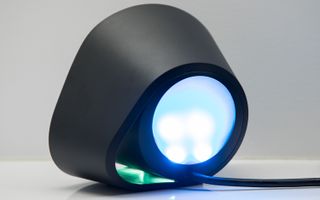
The integrated lighting is the primary thing that distinguishes the G560 from the competition, and it's impressive — for the most part. By taking advantage of four separate lighting zones, it's possible to do a lot of cool and subtle things with the G560, from attractive color cycling to preprogrammed patterns in games like Fortnite and Final Fantasy XIV. (You can also turn the lights off completely, if you're the kind of person who eats plain Cheerios while listening to Imagine Dragons.)
However, the coolest lighting option on hand is also the most inconsistent. Logitech has implemented a feature called a "screen sampler," which allows you to split your desktop screen into quadrants and take color samples from each. These colors will then correspond to the G560's four lighting zones. For example, suppose you're playing StarCraft, managing a Terran base in the upper-left corner while waging war on the Zerg in the lower right. One speaker will show you subdued blues and grays; another will show you a shifting series of browns, purples, reds and yellows.
In practice, it sometimes works like that. More often, though, the screen sampler is incredibly sensitive and will flash a huge range of colors, at varying intensities, even more quickly than its default color cycling. It wasn't fun to watch; it was kind of dizzying. By reducing the sensitivity of the color changes, I was able to get it to a more manageable level, but this required a fairly deep dive into the sampling options. Furthermore, you can't see all four quadrants on-screen at a single time, meaning that setting up the perfect distribution requires a bit of guesswork (or an eidetic memory).
For comparison purposes, the Razer Nommo Chroma speakers ($150) also offer colorful LED lighting, which can sync with other Razer products. However, there's no screen-sampling feature, and they don't offer game-specific lighting patterns, unless you're willing to program your own.
It's also worth pointing out that if you have the Nvidia GeForce Experience software installed, you should disable its overlay, or else your games won't automatically switch lighting or sound profiles. This isn't a bug with the Logitech software, but learning from my mistake could save you a lot of trouble.
The Logitech Gaming Software also allows you to switch the lighting options over to the hardware. This lets you connect a device via Bluetooth and still see a fancy light show — a handy application for a party. Bluetooth connectivity is simple and efficient, although the audio quality is understandably better through the USB cable.
Logitech G560 Gaming Speakers review: Music performance
Those familiar with Logitech's lineup of everyday speakers won't be shocked to hear that the G560 handles music and movies with just as much fidelity as video games. A DTS 7.1 surround-sound setting for music and movies makes passive entertainment come alive; the stereo setting also sounds robust and nuanced, if you're a purist.
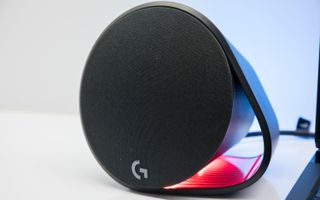
I ran the G560 through just about every genre in my playlist: rock, bluegrass, punk, classical and more. The sound was beautifully balanced, whether I was listening to the twangy bass of Old Crow Medicine Show or the aggressive accordion of Flogging Molly. Listening to Bach's Violin Concerto in E Major was especially a treat, as I was able to pick out every part, from the prominent violin to the usually almost-inaudible harpsichord.
Logitech G560 Gaming Speakers review: Verdict
The Logitech G560's lighting ambitions sometimes outstrips its performance. I wish you could disable the subwoofer and have finer control over the volume at low levels. Beyond that, though, the G560 is an impressive first crack at a dedicated gaming speaker system. Given Logitech's track record for both speakers and gaming peripherals, maybe that's not shocking, but it's good news, just the same.
With rich sound for both games and music, a novel design and lots of ways to customize your experience, the G560 is a worthwhile investment for gamers who prefer wide-open sound to the confines of a headset. Just be sure to take advantage of the headphone jack if you play late at night — and to turn off the lights.
Make sure you get the best deal possible on your next Logitech gaming speakers by checking out our Logitech promo codes.
- How to upgrade your gaming PC: 5 easy tweaks
- The best gaming headsets, ranked
- Logitech G333 review — gaming earbuds with a versatile design
Marshall Honorof is a senior editor for Tom's Guide, overseeing the site's coverage of gaming hardware and software. He comes from a science writing background, having studied paleomammalogy, biological anthropology, and the history of science and technology. After hours, you can find him practicing taekwondo or doing deep dives on classic sci-fi.
